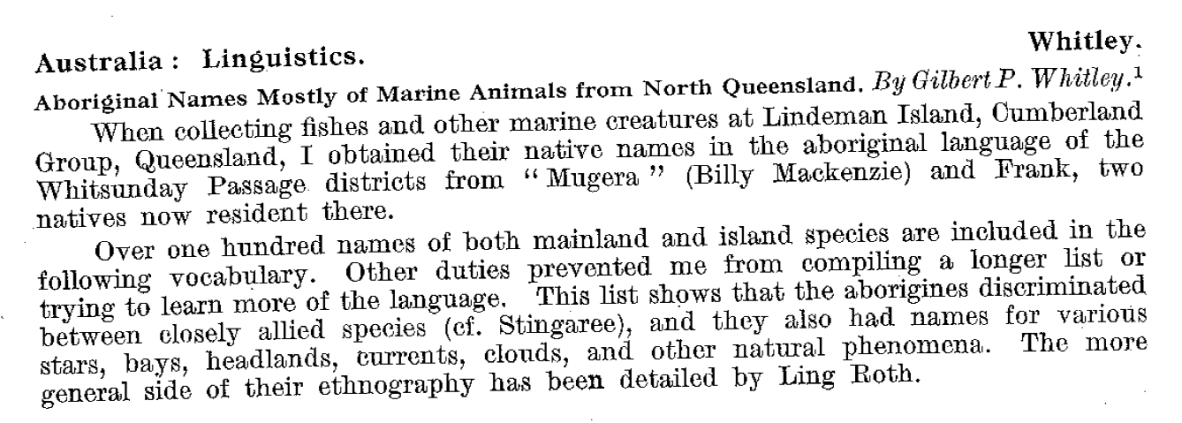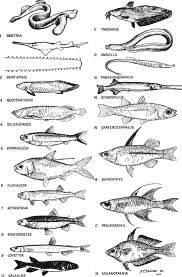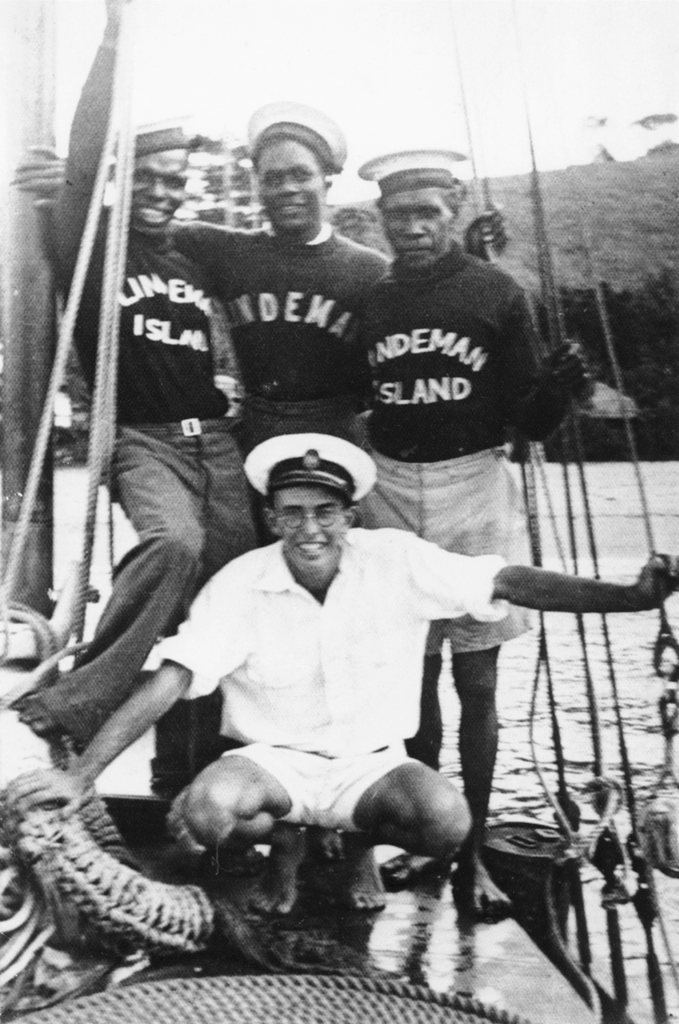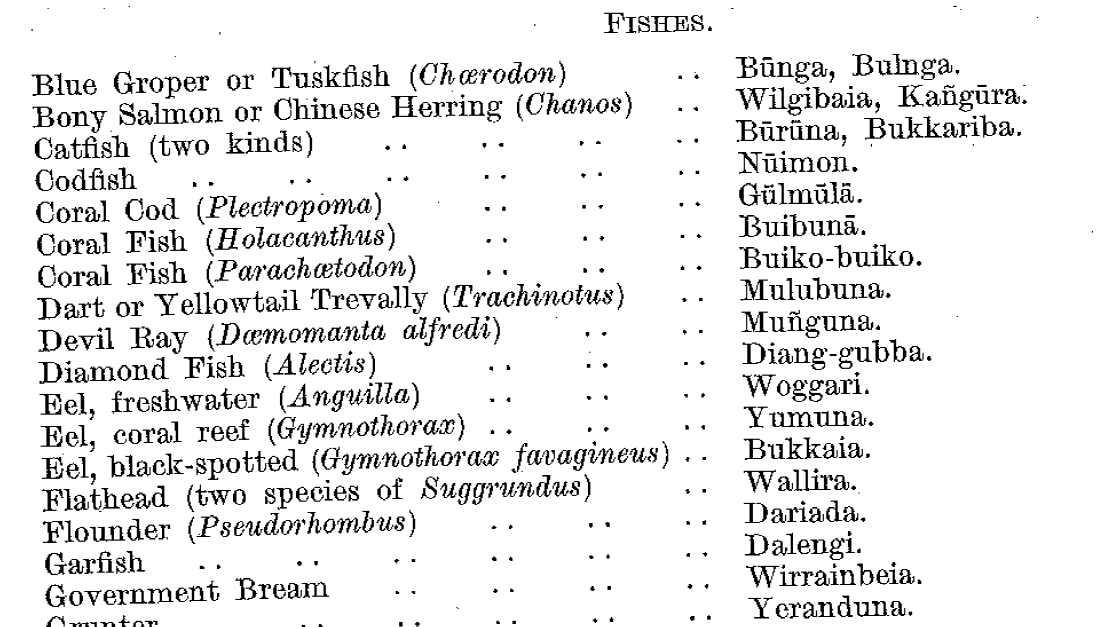Aboriginal names mostly of marine animals from North Queensland.
By administrator | 19 August 2015

Aboriginal names ... G P Whitley (1936)
This innocuous title refers to an article written in 1936 by Gilbert Percy Whitley, Ichthyologist and Curator of Fishes at the Australian Museum. Whitley published this article in Mankind, the Journal of the Anthropological Society of NSW. The State Library collections hold several titles by Whitley, including Fishes of Australia, Marine Fishes of Australia and Freshwater Fishes of Australia.

Native Freshwater Fishes of Australia.
This article however, proved to be a lifesaver in responding to a client query seeking the Aboriginal language word for 'stingray' from the Whitsunday Island Group. During the initial phone call, I explained to the client that the Ngaro language of the Whitsundays was not well documented and there may be minimal resources, if any.

Fortunately, I recalled a reference to an island in the Whitsundays which was attributed to the work of Whitley. The island was named Sillago Island after an incorrect reading of Whitley's work - instead of the Ngaro language word dairbaia, the scientific name was recorded and gazetted. Whitley was very meticulous in his recording of the different marine animals and identified several names for the different species of stingrays found in the region.


Boat workers Lindeman Island Queensland, JOL Negative No. 75976.
Whitley's main informants for his wordlist were two Aboriginal men - Mugera (Billy McKenzie) and Frank Dewar (half brother to Billy) who worked on the Nicholson Sheep Station at Lindeman Island. The Nicholson family took up a pastoral lease there in 1920 and employed several Aboriginals from neighbouring islands who would travel across on their ironbark canoes (called winta in Ngaro language). Angus Nicholson later established the tourist resort at Lindeman Island with the construction of eight grass huts in 1928. Billy, Frank and Dick Lahou (from Mer/Murray Island) all worked as boatmen or pilots for the resort. The above photo from the collection shows the three men, unfortunately there are no names to clearly identify Billy.

The Great Barrier Reef: Nature's Masterpiece, 1931.
The Whitsunday Group of Islands was a hive of activity for the Ngaro and other Aboriginal groups in the region. A stone quarry on South Molle Island has been dated at operating for ~10,000 years with stone knives and other tools traded with Aboriginal groups from North and Central Queensland. The journals and logs of Cook, Flinders and other ships passing through the region refer to the Aboriginal groups of the islands drawing attention to their use of fire and their canoes. Cook was the first to note the use of outrigger canoes - later confirmed by an illustration by Edwin Augustus Porcher on the HMS Fly's 1843 surveying voyage of the Queensland coastline. Historical and archaeological evidence suggests the Whitsundays were only sparsely inhabited with about 150-200 Ngaro people living there with Lindeman Island (Yara-kimber/Yarrakiemmea meaning snapper fish) being the main permanent camp. The onset of tourism in the 1930's saw the removal of the few remaining Aboriginal people to mainland missions - only Billy and his workmates remained.

Today traditional owner groups in the region are revitalising the language and culture of the Ngaro people and other groups across the region. This wordlist of over 100 words can add to the traditional knowledge of community members - a scanned copy has been shared with Mackay Regional Library for community access.
Desmond Crump
Indigenous Languages Coordinator, Queensland Memory
SLQ Indigenous Languages Webpages
References and Further Reading
Barker, B. (2004) The sea people: late holocene maritime specialisation in the Whitsunday Islands, Central Queensland. Q 930.1 BAR
Boat workers Lindeman Island Queensland. JOL Negative No. 75976
Giru Dala Council of Elders (1997) The lore of the land: paintings and stories by the children of the Ngaro and Gia homelands. JUVQ 577 LOR
Jukes, J. (1847) Narrative of the surveying voyage of H.M.S. Fly. RBJ 919.4304 JUK
Nicholson, A. D. (1931) Lindeman Island tourist resort, Whitsunday Passage, Queensland. P 919.436 lin
Queensland Government Tourist Bureau (1931) The Great Barrier Reef: Nature's masterpiece. P 919.436 GRE
Roth, H. L. (2009) The discovery and settlement of Port Mackay, Queensland: with numerous illustrations, charts and maps, and some notes on the natural history of the district. Q 994.36 ROT
Whitley, G. P. (1936) "Aboriginal names mostly of marine animals from North Queensland", in Mankind, Vol. 2., No. 2. S 572 007
Whitley, G. P. (1940) The fishes of Australia. G 597.3 1940
Whitley, G. P. (1962) Marine fishes of Australia. JSM 597 WHI
Whitley, G. P. (1964) Native freshwater fishes of Australia. OSG 597.0994 1960
Comments
Your email address will not be published.
We welcome relevant, respectful comments.